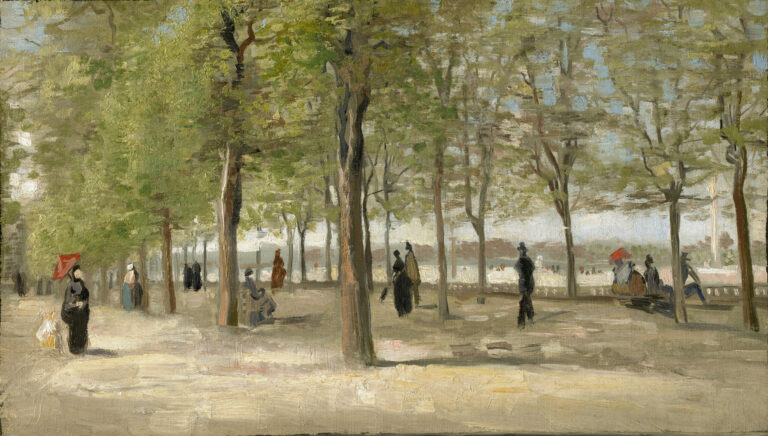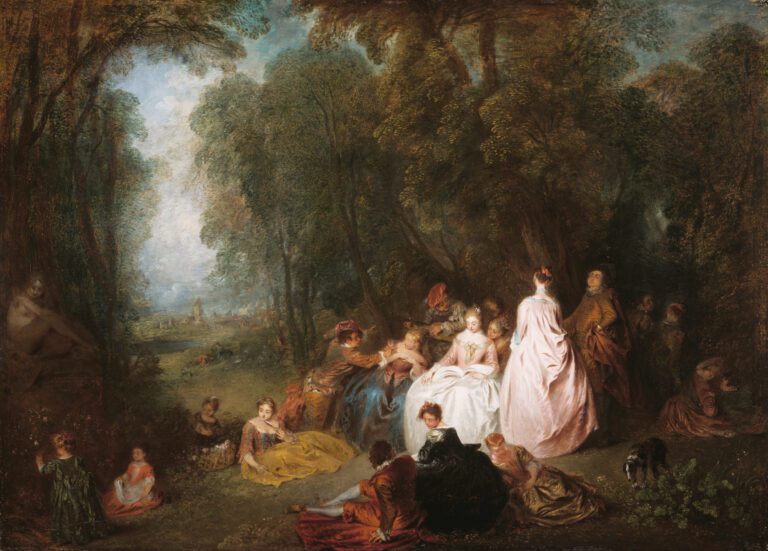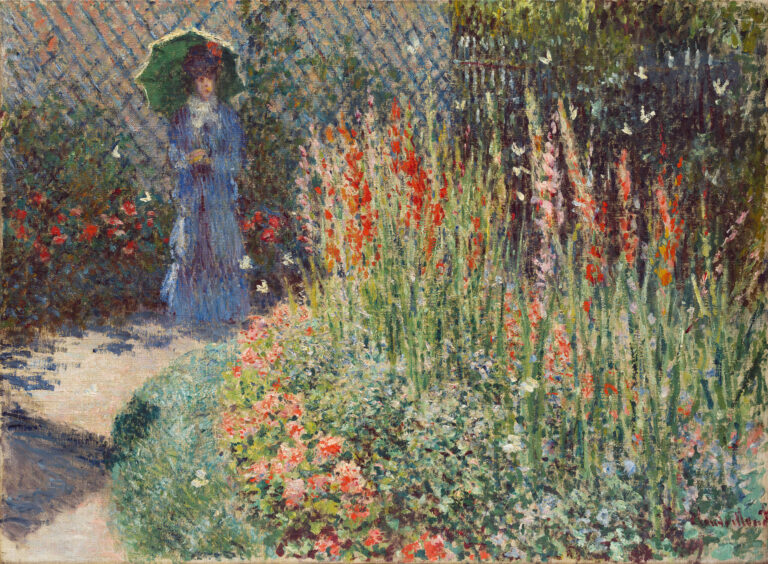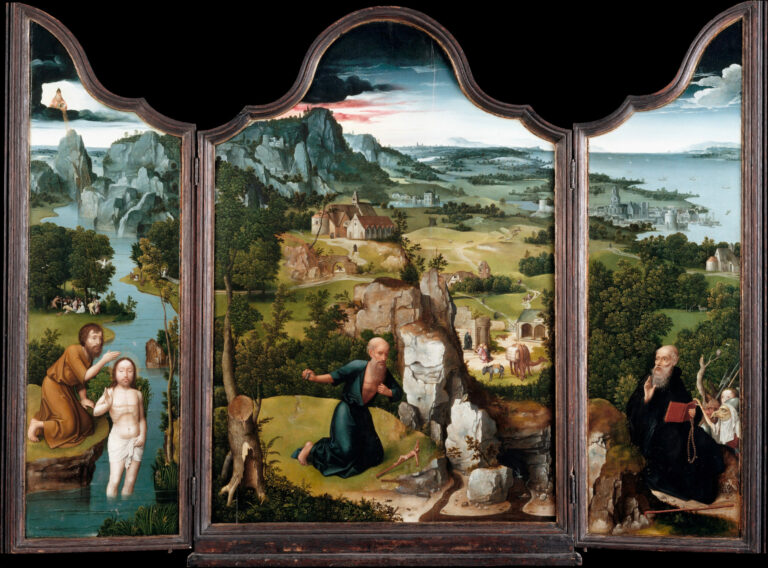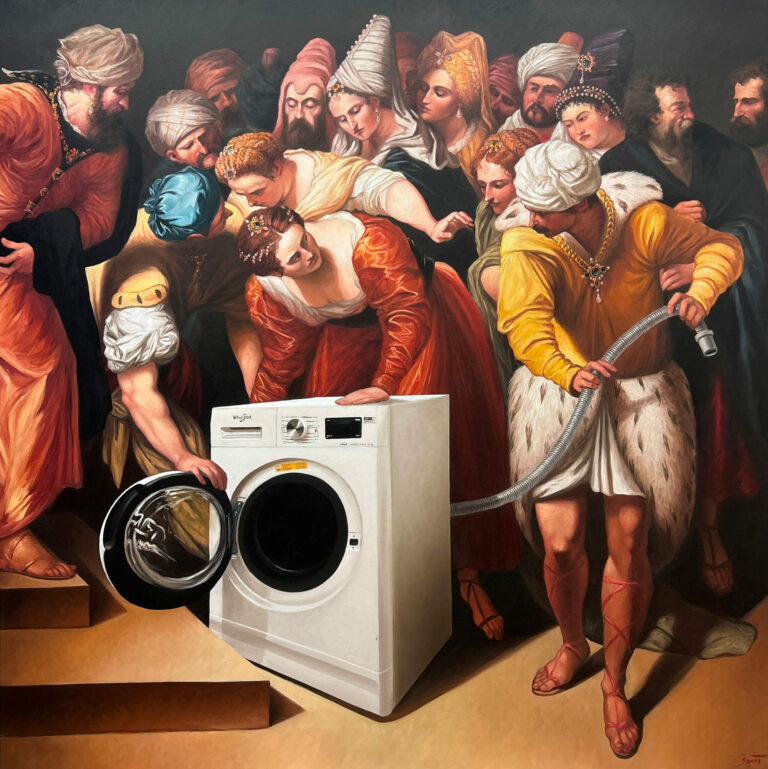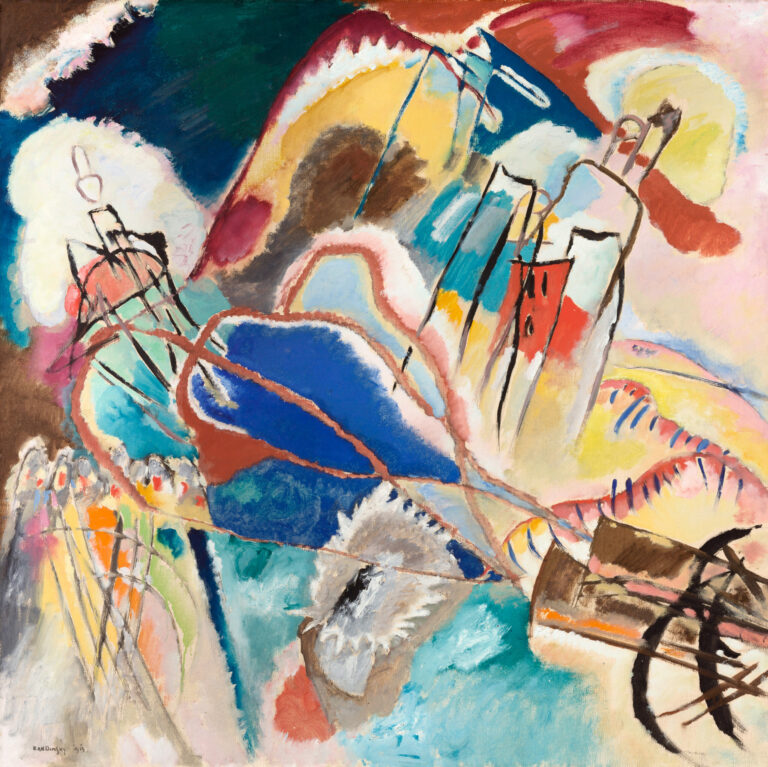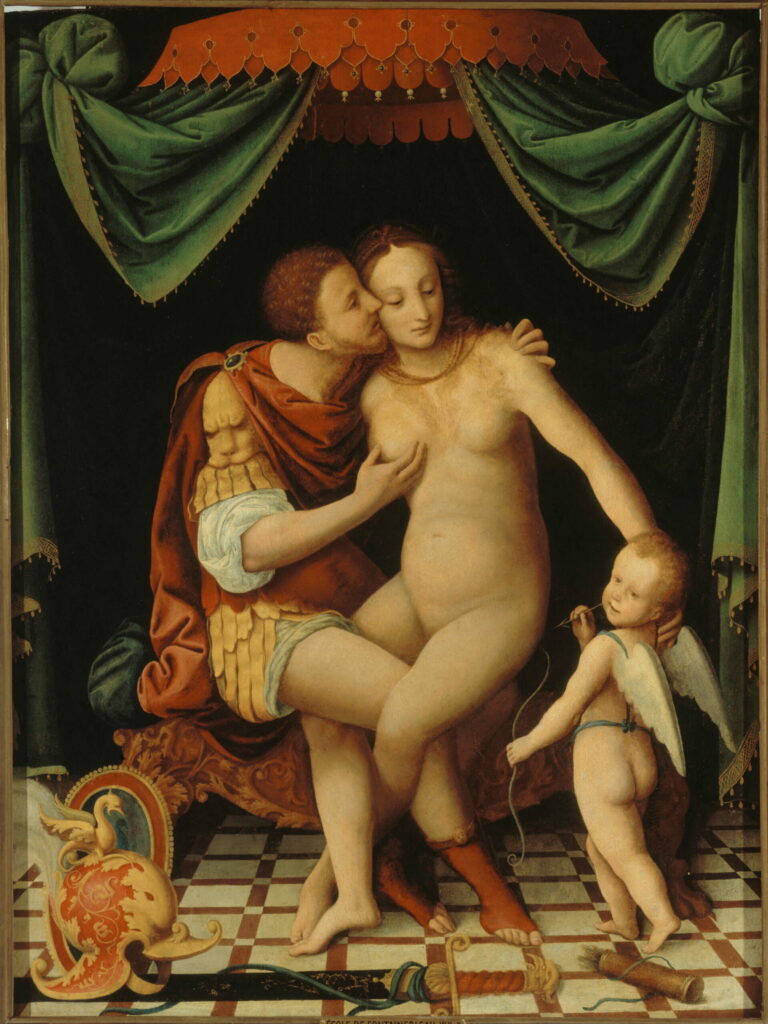
This sumptuous work attributed to Bernardino Lanino immerses us in the intimacy of divine love through a theatrical composition characteristic of the Italian Renaissance.
The emerald green drapery and red-orange canopy masterfully frame the central scene, creating a private space upon a checkered floor that enhances the perspective.
Mars, identifiable by his golden armor and scarlet toga, embraces Venus with an almost reverent tenderness. The goddess, in her diaphanous nudity, embodies the Mannerist ideal of beauty with her soft forms and serene countenance. Eroticism is subtly suggested through the lovers’ gestures and the playful presence of Cupid who, nibbling his arrow, establishes a mischievous complicity with the viewer.
Mars’s abandoned warrior attributes—shield and weapons—lie discarded on the ground, symbolizing love’s triumph over war. The balanced composition, delicate treatment of flesh tones, and chromatic harmony testify to consummate technical mastery.
Futher information
- Mars and Venus, Attributed to Bernardino Lanino, oil on wood, 16th century
- 94.5 x 70.7 cm
- Petit Palais, Museum of Fine Arts of the City of Paris, Paris Musées
- https://www.parismuseescollections.paris.fr/fr/petit-palais/oeuvres/mars-et-venus-0
Bernardino Lanino (c.1512-1583), a Piedmontese artist primarily active in Vercelli, was one of Gaudenzio Ferrari’s most brilliant students. His style, deeply influenced by the Lombard school, is distinguished by refined elegance and restrained sensuality. An heir to the Leonardesque tradition, he developed a personal manner characterized by supple modeling, warm colors, and particular attention to chiaroscuro effects. His prolific career featured numerous religious and secular commissions, significantly contributing to Piedmont’s artistic influence during the 16th century.

